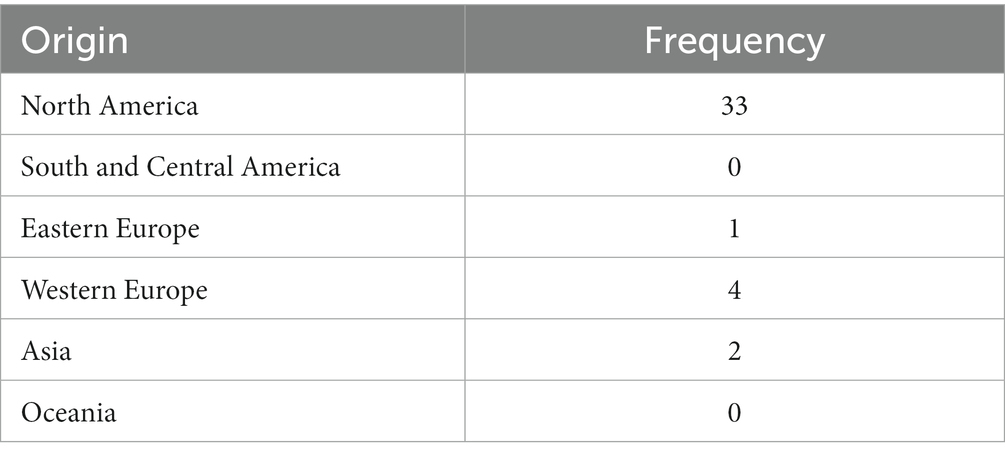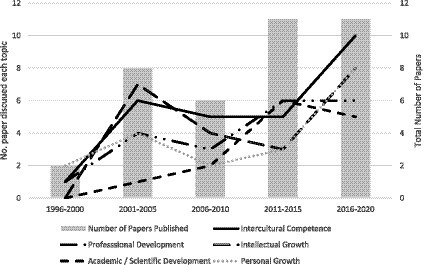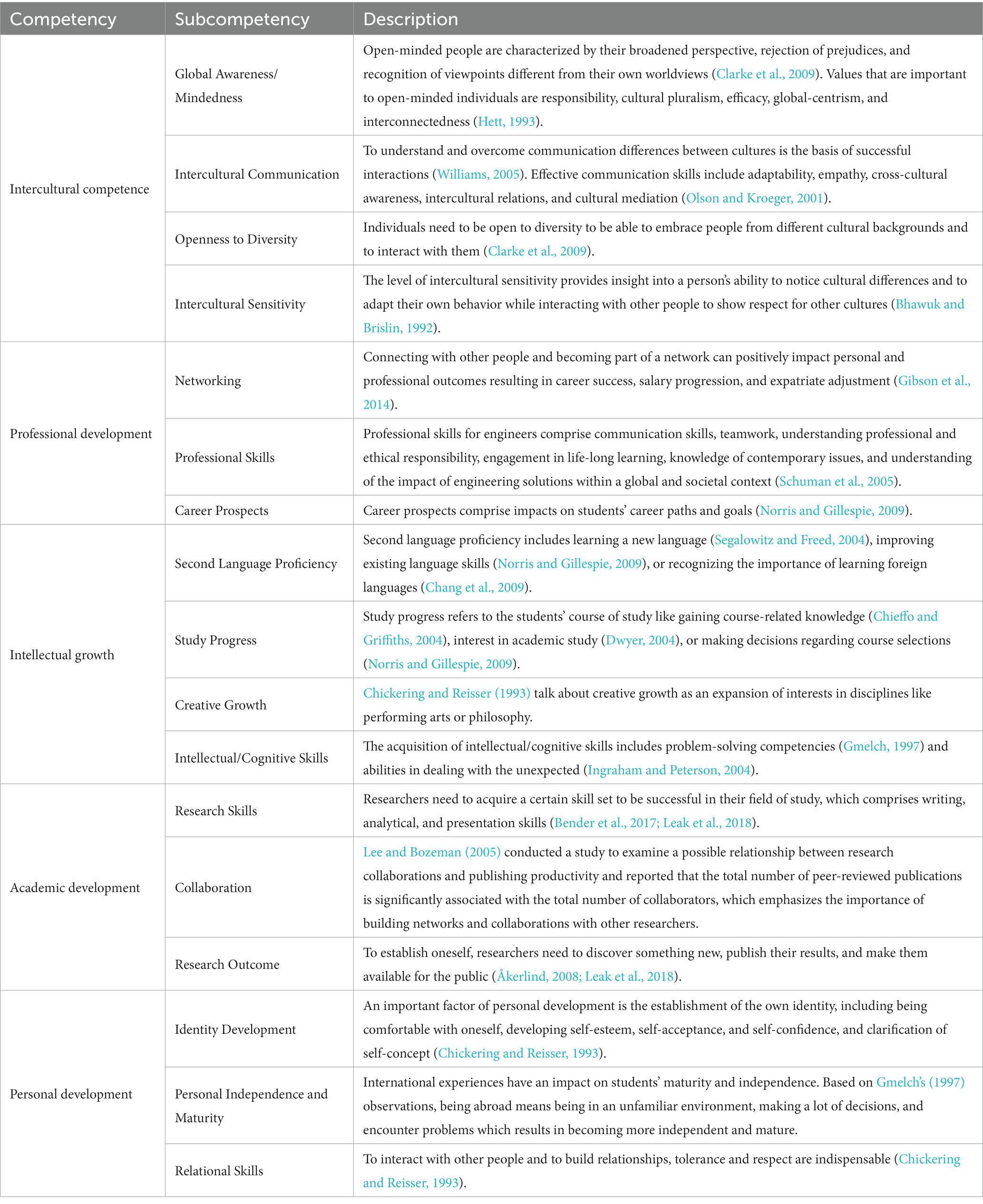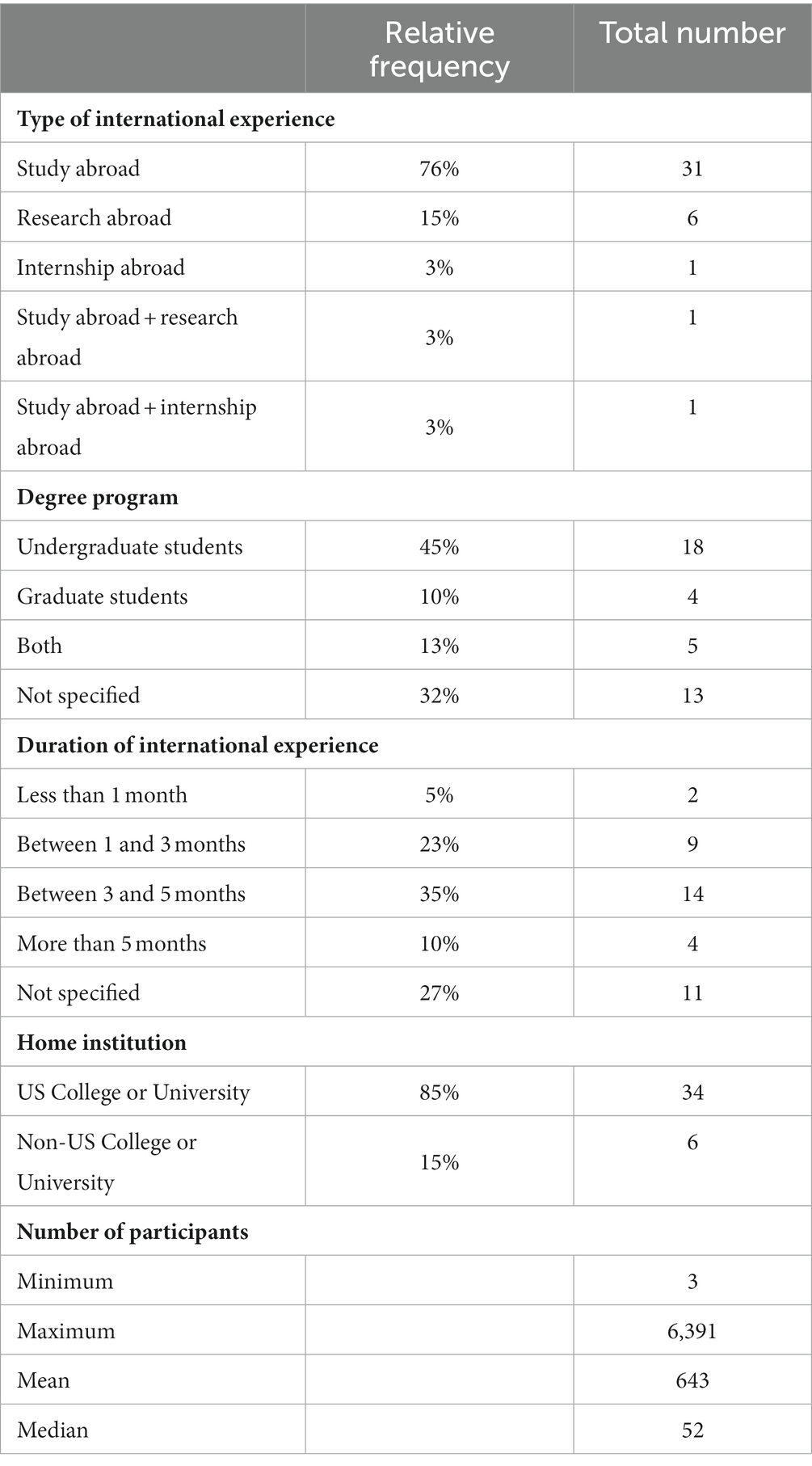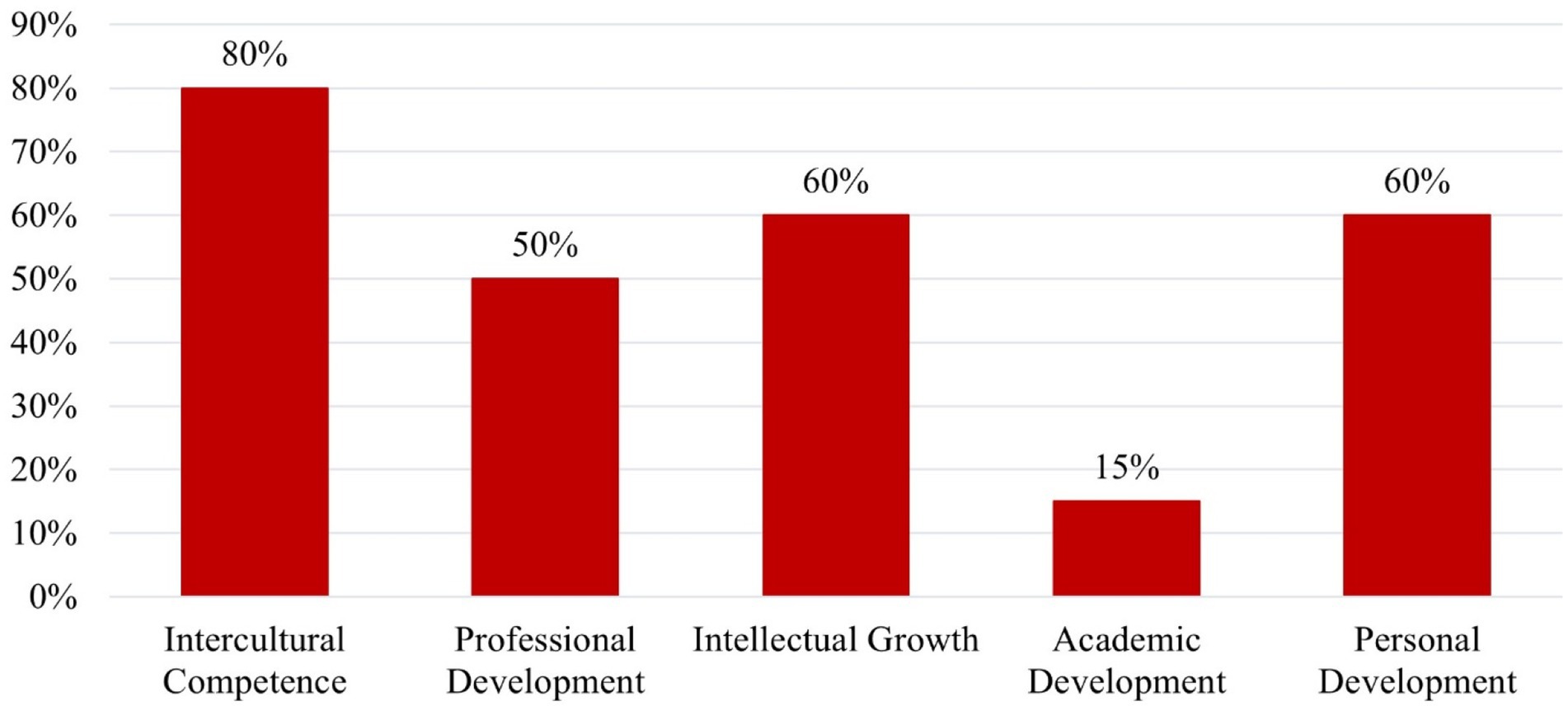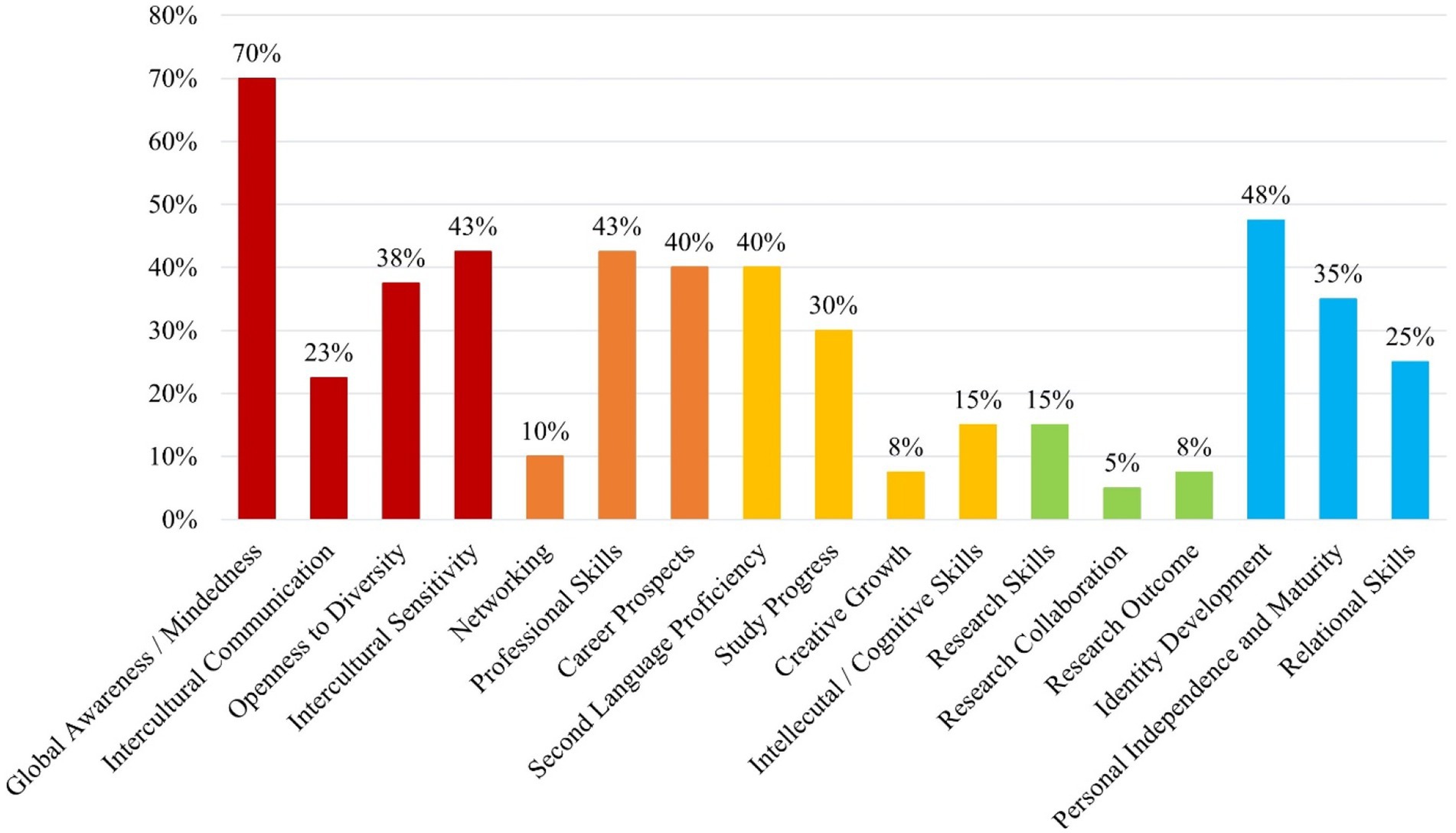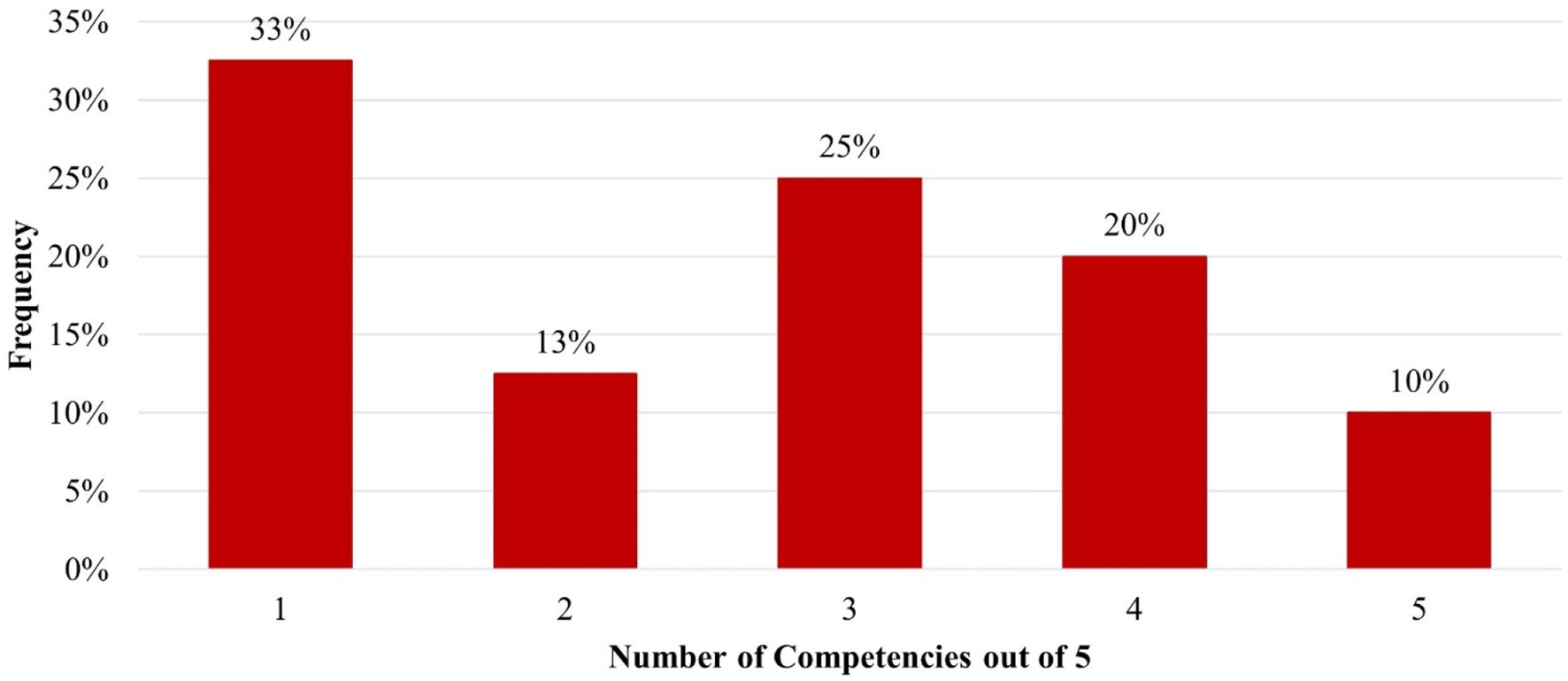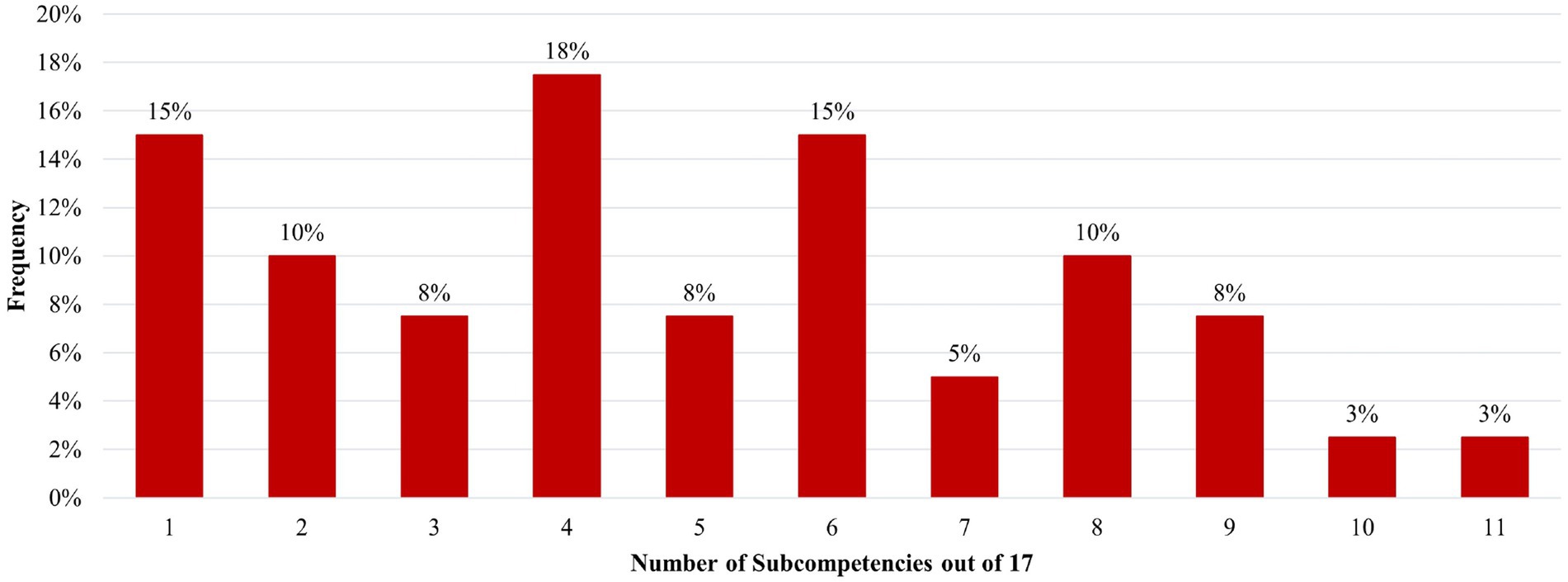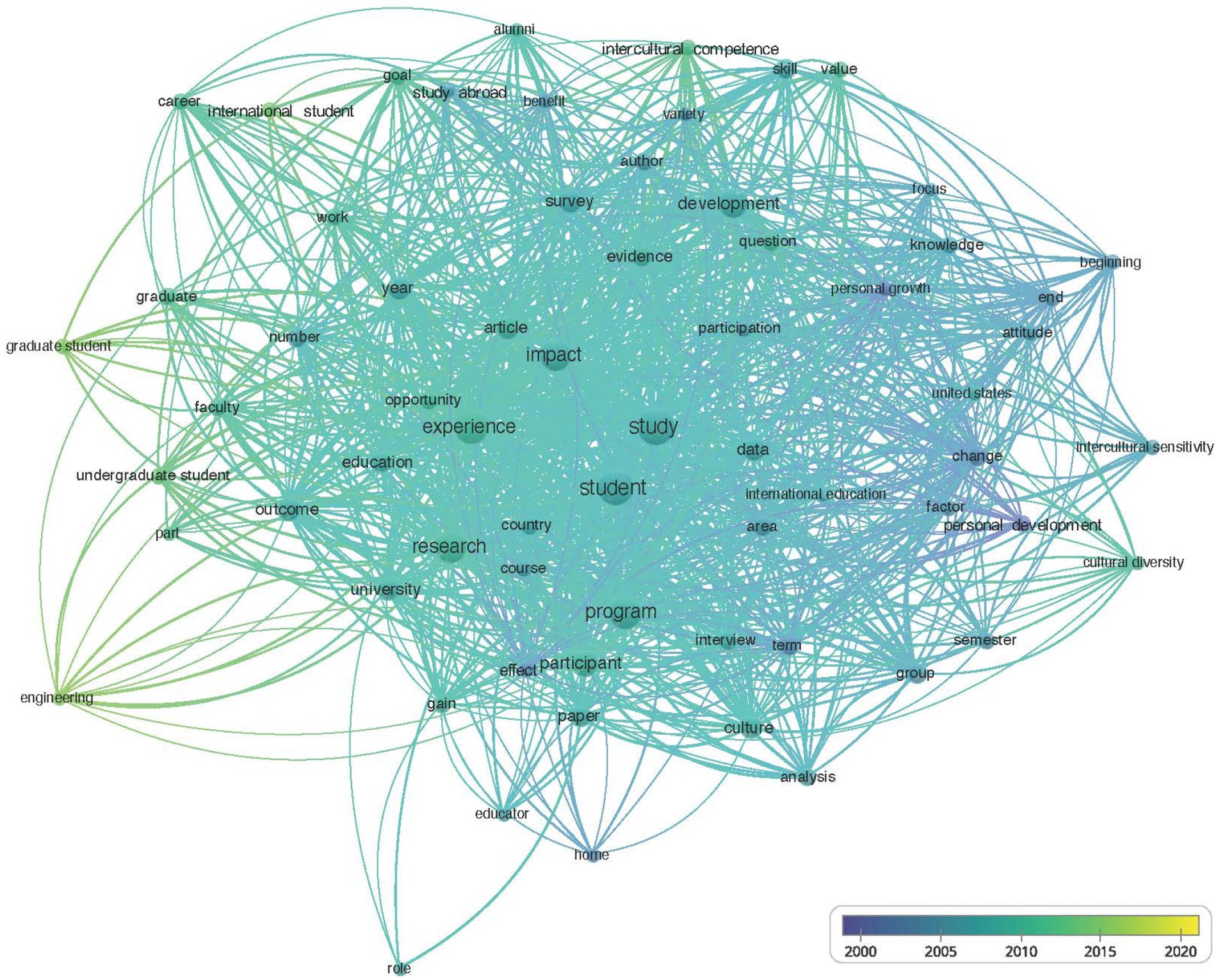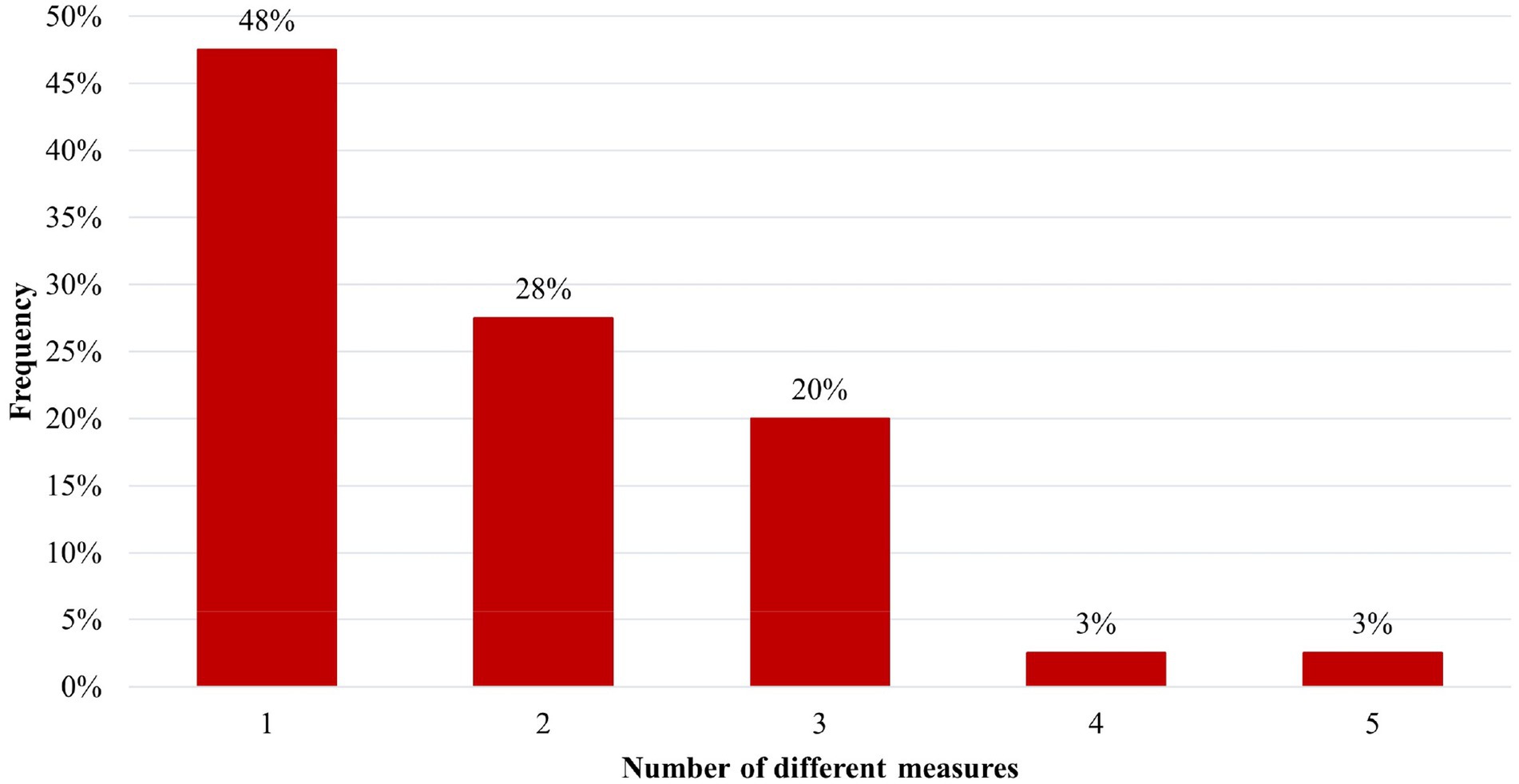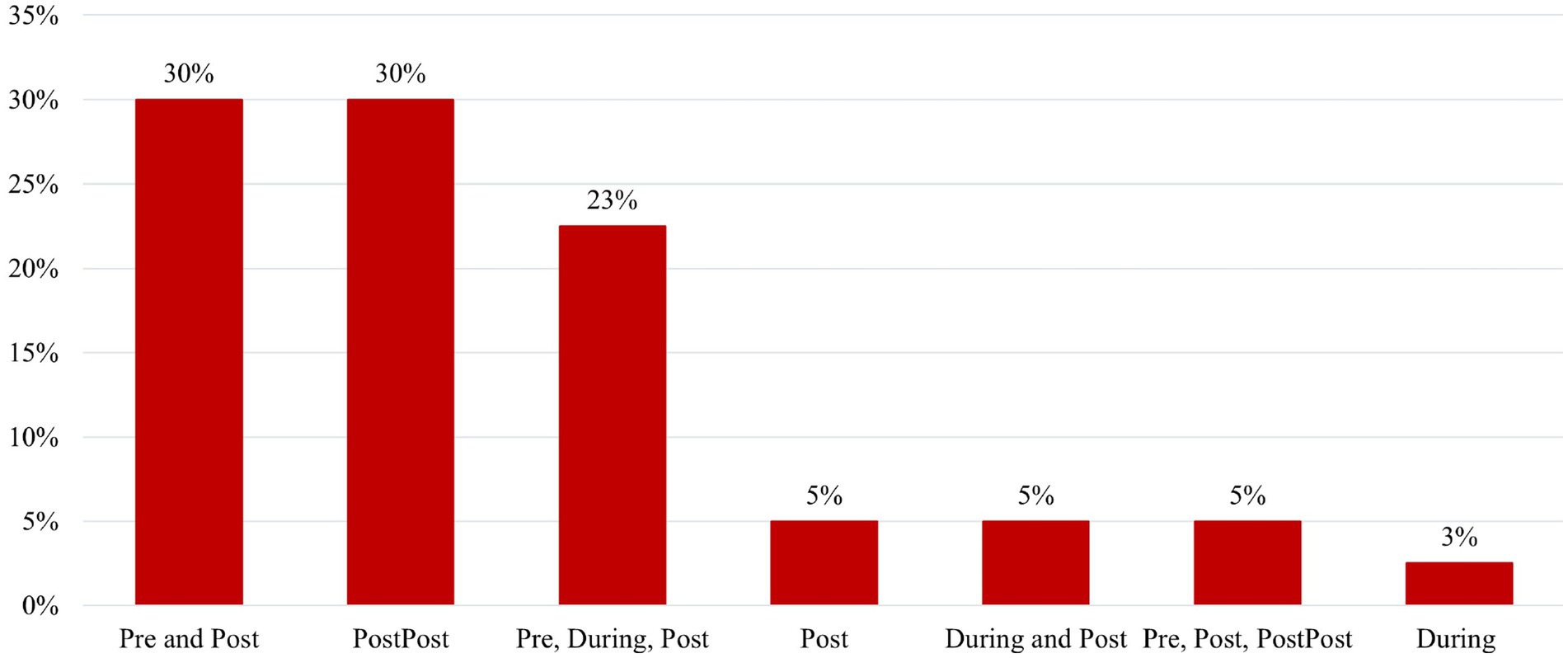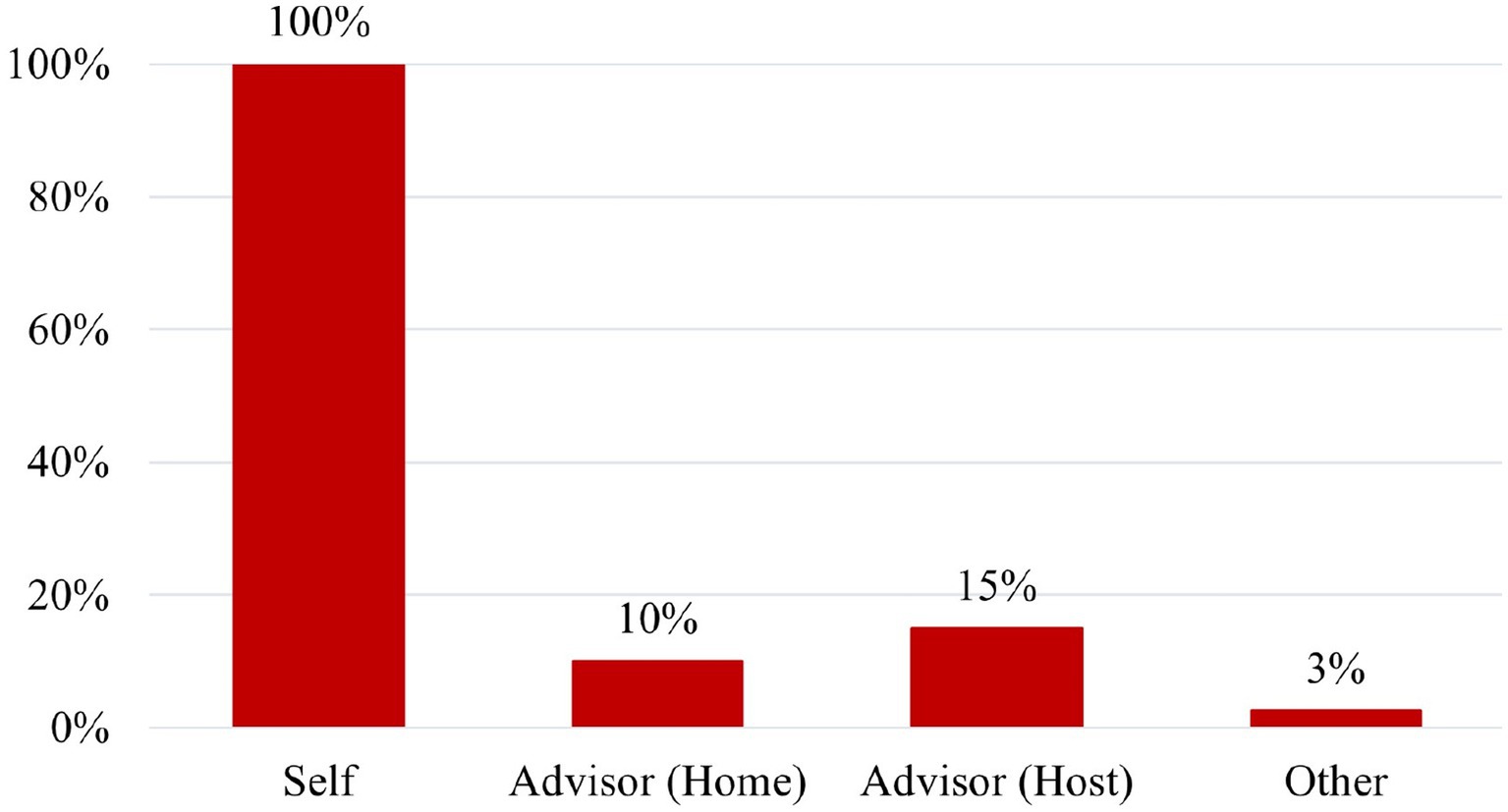- School of Sustainable Engineering and the Built Environment, Arizona State University, Tempe, AZ, United States
As a result of the ongoing globalization, international student experiences are becoming fundamental to advance students’ development and knowledge. Even though such growing importance, the body of knowledge regarding international interventions is dominated by subjective accounts and lacks contrasted results. In order to design an international research experience for graduate students, recommendations on the design and content of such experiences based on the review of literature were explored. A qualitative and bibliographical analysis of 40 studies evaluating the influence of international student interventions informed about the variables that such interventions should measure and the impact of such experiences on student development. Researchers especially measured the competencies intercultural development (83%), intellectual growth (58%), personal development (58%), professional development (50%), and academic development (15%). However, most of the studies failed to develop an appropriate research design that enables researchers to capture the breadth and depth of an international intervention. Results include addressing various competencies that students can gain during their experience abroad, using mixed methods to collect the data, whereby data should be collected at different time points including before, and multiple times after the international experience by different means.
1. Introduction
With the current focus on globalization, international research collaborations are becoming increasingly important to facilitate a solution to complex problems and to maintain competitiveness in innovation and knowledge (Lynn and Salzman, 2006; Oda et al., 2020; Fitzgerald et al., 2021; Liu et al., 2023). International collaborations open the doors to world-class equipment, laboratories, and facilities access to unique data, ideas, and methods, which can flourish in creative opportunities for knowledge discovery and innovation (Wagner and Leydesdorff, 2005; Leak et al., 2018; Meyers and McCready, 2020). Lee and Bozeman (2005) explored, during a 3-year period, the relationship between research collaborations established from researchers affiliated with university research centers in the United States and researchers at other universities (abroad and/or in the United States) and publishing productivity. The study determined that publishing activity increases with the number of collaborators, even though the fractional publishing activity (publications over the number of collaborators) is not impacted the size of the collaborators’ group. Recently, the analysis of the international research ties and productivity among 72 countries during a 20-year period has determined that the stability and persistence of international research collaborations is associated with above-average productivity and citation frequency (Liu et al., 2023). Such international research collaborations between universities often result in the production of high-quality research outcomes (British Council, 2012). Indeed, the establishment of international research collaborations are noted to become even more important after the COVID pandemic (Goldsworthy et al., 2022). Moreover, international research experiences for graduate students provide opportunities to engage in research and establish long-lasting research collaborations with researchers abroad. There is an agreement that these experiences offer the opportunity to advance students’ knowledge and enhance their research skills (Ingraham and Peterson, 2004; Leak et al., 2018; Wilson et al., 2019).
In addition, international experiences result in positive impacts on student development by gaining competencies in the fields of intercultural competence, professional development, intellectual growth, academic development, and personal development (Waldbaum, 1996; Ingraham and Peterson, 2004; Leak et al., 2018; Richardson et al., 2020). Furthermore, international student experiences enable students to build professional networks and make them more competitive on the job market (King and Ruiz-Gelices, 2003; Franklin, 2010; Leak et al., 2018). However, researchers mainly concentrated on analyzing study abroad experiences whereas possible benefits of international research experiences are still unclear and need to be further investigated (Black and Duhon, 2006; Clarke et al., 2009; Doyle, 2009).
The body of knowledge regarding international student experiences is currently dominated by subjective accounts and lacks contrasted results (Kirk, 2008; Royal Society, 2011). A common methodological design does not exist. Indeed, ineffective research designs have been used in the past to capture the breadth and depth of international interventions (Kirk, 2008). The assessment of international student experiences has often aimed at capturing the expectations of accrediting and funding institutions (Sutton et al., 2007), as opposed to tailoring the specific learning outcomes of the intervention. As a result, studies fail to inform educators and researchers alike on the specific competencies students can gain abroad. Often, data collection efforts rely on student subjective opinions that cannot be used to measure learning or other outcomes. Additionally, many instruments lack content validity and empirical strength, since they were developed for a to satisfy a specific sponsor or program and are not necessarily applicable to other interventions (Sutton et al., 2007; Jesiek et al., 2014).
The objective of this research is to ascertain the design an international research experience capable of effectively measuring the impact of such type of interventions. Literature was reviewed and analyzed to develop and recommend a research design capable of capturing the distinct facets of an international student experience. Additionally, competencies impacted by such an intervention were identified and discussed. Such competencies are intercultural competence, personal development, intellectual growth, professional development, and academic development.
The rest of this manuscript is structured as follows. The next section discusses the research methodology of the study presented in this paper, which is followed by recommendations on the research approach to be adopted by studies on international research interventions. Then, the discussion of each key competency through review of the social sciences literature precedes the retrospective analysis of design methods on international students research studies. Finally, a discussion of the results and the conclusions summarize the contribution of this article.
2. Methodology
Relevant studies were identified using a systematic review methodology (Grant and Booth, 2009). Figure 1 illustrates the methodology. The databases Scopus and Education Resources Information Center (ERIC) were consulted using the search terms “international research experience,” “international student experience,” “research abroad,” “student abroad,” “study abroad,” and “education abroad.” Studies published in English as peer-reviewed journal articles or doctoral dissertations were included in the search. As a result, 11,155 articles published between 1996 and 2023 were identified containing at least one of the abovementioned search terms in their title, abstract, or keywords.
A further selection of those articles was made based on their title. Thereby, 8,342 publications were eliminated since they were not related to international research or student experiences. The abstracts of the remaining 2,813 articles and dissertations were further analyzed based on the following criteria: (1) college or university students; (2) empirical studies on international interventions, study abroad and international research experiences; and (3) analysis of competencies gained or improved during the intervention. As a result, 2,773 publications did not meet these criteria and thus were excluded. In total, 40 articles were identified for the bibliographical review. Table 1 contains the origin of the studies, with a predominance of North American studies followed by Western European studies. Studies mostly focused in engineering students followed by science students.
Open and axial coding were used to analyze the content and the design of the 40 studies (Creswell and Creswell, 2018) focusing on the following coding schemes to categorize the data: (1) competencies analyzed; (2) research methods including measures, analysis, validation, data collection timing, and data sources; and (3) study characteristics such as duration and purpose of the international intervention, or number of participants. As a result of the coding process, 17 subcompetencies were identified and grouped into five key competencies of intercultural competence, personal development, intellectual growth, professional development, and academic development. Figure 2 illustrates the trend of publication in each competency over the investigated period.
In order to define and explain each competency, its corresponding core literature was reviewed. Thus, literature on research designs in social studies was gathered to identify an appropriate research design that is capable of effectively measuring the impact of an international student experience. See details in section 4.
3. Measuring the student impact from an international intervention
In order to effectively measure the impact of an intervention, an appropriate research approach needs to be designed. To implement a research plan, the research method is needed to define the logical structure of the inquiry (De Vaus, 2001). Therefore, appropriately defining the research purpose before planning a research study is necessary (Morgan, 2014).
By combining different and multiple methods, analysts, sources, and theories, the validity of a research study can be strengthened and bias minimized. Patton (2002) distinguishes four types of triangulation: (1) methods triangulation; (2) triangulation of data sources; (3) analyst triangulation; and (4) theory triangulation. Problems in social sciences are often too complex to be investigated by using only a single data collection method. Different methods should be used to capture different aspects of a problem. Since not all methods have the same strengths and weaknesses, findings generated by different data collection methods need to be triangulated and checked for consistency. Also, since participants tend to report effects only because they expected them to occur, studies should not only rely on self-reported data (Pike, 1995; Rohs, 1999). In order to improve objectivity additional sources of observation close to the student should be consulted. To enable triangulation, data should be collected at different times and through different data collection tools and sources. To increase the quality of the analysis, research findings should be reviewed by multiple investigators. Additionally, data should be analyzed by using different theoretical perspectives. By applying all four types of triangulation, systematic bias and distortion can be reduced (Patton, 2002).
An appropriate data collection method is necessary that matches with the purpose of the research study. When the research purpose is inductive, subjective, and contextual, qualitative methods like interviews and observations are well suited (Morgan, 2014) since they enable researchers to get in-depth insights into students’ stories, behaviors, and individual experiences (Oda et al., 2020). Alternatively, if the research purpose is rather deductive, objective, and generalized, quantitative methods like surveys and experimental interventions are appropriate (Kumar, 2014; Morgan, 2014). In reality, though, a mixed methods research approach enables a holistic approach by combining the strengths of quantitative and qualitative approaches, which ultimately enables a more complete understanding of the impact of the researched intervention compared to the use of only one research approach (Creswell and Creswell, 2018). On the one hand, the intent of quantitative research is to enable replications and generalizations of the findings through quantitative analysis. Thereby, bias is controlled by applying a deductive style and analyzing a large number of participants, often 30 or more to enable parametric statistics. On the other hand, qualitative research prefers an inductive reasoning approach to understand and make meaning of the experiences of individuals by analyzing their words and meanings (Morgan, 2014). Since problems in social sciences are often characterized by their complexity, one research approach is not enough to address the problem (Creswell and Creswell, 2018).
Capturing the sustained impact of international student experiences demands collecting not only the immediate but also the long-term impact since the former can rapidly vanish when the student returns to her/his domestic institution and life at home. For example, data collected immediately after the intervention (post) and also months or years after the intervention (post-post) can facilitate the assessment of the influence of time on the intervention, as well as identify the long-term impact on the students. In order to generate a baseline, data must also be collected before the intervention (pre) as the control measure (Kumar, 2014). Indeed, in order to enable comparisons with the post-intervention data, and therefore to analyze if the impact is caused by the intervention, data prior to the international experience needs to be collected (De Vaus, 2001; Kumar, 2014).
In order to increase the impact on students, a minimum length of the students’ international experience should be defined. Koester (1985) found that the optimum length is between six and 12 months. To increase the possible impact even for shorter interventions, preparation activities prior to the international student experience and reflective activities after the students’ return are needed (Sikkema and Niyekawa, 1987; Dwyer, 2004).
Finally, as stated in the previous section, the existing literature covers five student competencies impacted by international research experiences (Waldbaum, 1996; Ingraham and Peterson, 2004; Leak et al., 2018), which are intercultural competence, personal development, intellectual growth, professional development, and academic development. The design method should be designed to capture the impact of the student intervention in each of those competencies. Different tools are likely needed to capture the impact on each competency.
4. Student competencies
A review of the literature informed on the key competencies that students are susceptible to gain or improve as a result of their international intervention. Such competencies are intercultural competence, professional development, intellectual growth, academic development, and personal development (Waldbaum, 1996; Ingraham and Peterson, 2004; Leak et al., 2018). While there is agreement on such classification of competencies, opinions differ on its subcompetencies. For example, “second language proficiency” is often considered as an intercultural facet (Olson and Kroeger, 2001; Deardorff, 2006), while it is also considered an integral aspect of intellectual growth (Waldbaum, 1996; Ingraham and Peterson, 2004). For the purpose of this study, Table 2 contains a description of the 17 adopted subcompetencies, on which is expanded in the following paragraphs.
4.1. Intercultural competence
Different definitions of intercultural competence are used among scholars. Likewise, many different terms are used to describe the concept of intercultural competence like cross-cultural competence, global competence, or global citizenship (Deardorff, 2006). However, not only the terminology differs but also the definitions. While Olson and Kroeger (2001) focused on substantive knowledge, perceptual understanding, and intercultural communication, Ruben (1976) included displays of respect, interaction posture, orientation to knowledge, empathy, self-oriented role behavior, interaction management, and tolerance for ambiguity.
In order to elucidate discussions about intercultural competence and its connotations Deardorff (2006) and Hunter et al. (2006) conducted studies with seemingly different but complementary results. Based on Deardorff (2006) model, the level of intercultural competence depends on a person’s skills, knowledge, and attitudes to effectively and appropriately communicate, behave, and adapt to intercultural settings. On the contrary, the study of Hunter et al. (2006) emphasizes that intercultural competence depends on the understanding of a person’s own cultural background. Therefore, a person needs to establish self-awareness before exploring other cultures.
4.2. Professional development
Similarly, no consensual definition of professional development exists. Ducheny et al. (1997) identified three elements of professional development which many studies share: continuing training and familiarity with relevant research; supportive peer group or mentor; and organization in stages (e.g., level of training or formative training). In addition, Ducheny et al. (1997) conducted a survey to ascertain the meaning of professional development and resulted in facets such as personal and professional experiences, values, skills and areas of expertise, educational background, and professional relationships. Besides values, Watts (1987) included theoretical perspective and career goals in his definition.
In their study, Walther et al. (2011) identified competencies that influence students’ professional development. Students need to be flexible and creative in order to solve complex problems. Moreover, they need to be able to interact and communicate with other people, self-organize themselves by planning their work and time, improve their own work performance, and work in an intercultural and interdisciplinary setting. Additionally, students need to possess knowledge and skills.
4.3. Intellectual growth
A majority of scholars agreed that academic performance as well as learning a second language or improving second language skills are dimensions of intellectual growth (Chickering and Reisser, 1993; Waldbaum, 1996; Ingraham and Peterson, 2004; McKeown, 2006). Waldbaum (1996) added creative growth gained through travel experiences and extra-curricular activities. This dimension is also supported by Chickering and Reisser (1993), who incorporate gains in cultural, aesthetic, and intellectual sophistication. Moreover, Chickering and Reisser (1993), Waldbaum (1996), and Ingraham and Peterson (2004) place intellectual or cognitive skills such as critical thinking and objective reasoning as part of intellectual growth. Finally, McKeown (2006) includes intercultural development in his definition of intellectual growth.
4.4. Academic development
College years hold huge potential for student development and growth. They have not just an impact on the student’s education, but also on the student’s career preparation and prospects, and knowledge and skills like problem-solving, critical thinking and communication skills. Optional students engaged in research have a better understanding of research methods and techniques (Hunter et al., 2007).
Åkerlind (2005) conducted a study to identify how researchers experience their own growth and development. Accordingly, academic development comprises academic performance (e.g., work output, academic standing), personal learning (e.g., accumulation of knowledge and skills), and disciplinary or social change (e.g., contribution to field of study). In a later study, Åkerlind (2008) determined how academics understand their role as researchers. Being a researcher implies fulfilling academic requirements, establishing oneself in the field of study, developing personally, and making a contribution to a larger community. The results essentially correspond to her earlier findings.
4.5. Personal development
Personal development is especially characterized by developing an own identity, interpersonal skills, and personal values and therefore becoming more mature and independent (Chickering and Reisser, 1993; Kuh, 1995; Gmelch, 1997; Hu and Kuh, 2003). Chickering and Reisser (1993) developed a model to describe the steps of college student development. These steps include developing competence, managing emotions, moving through autonomy toward interdependence, developing mature interpersonal relationships, establishing identity, developing purpose, and developing integrity. Kuh (1995) explored college student’s development by focusing on the dimensions of interpersonal competence, cognitive complexity, knowledge and academic skills, practical competence, and humanitarianism. Kuh (1995) also incorporated educational gains as a key competency. Similarly, Hu and Kuh (2003) focused on values and ethical standards, self-understanding, ability to get along with others, and teamwork skills, but added good health habits and physical fitness as their fifth dimension.
5. Retrospective analysis of design methods for international student experiences
Forty studies on international student experiences were reviewed with a design methods lens. Therefore, the design of the studies was investigated and compared with the design recommendations discussed above. Furthermore, student competencies reported in the reviewed studies were analyzed based on the classification in the previous section. The characteristics of the reviewed studies are summarized in Table 3.
5.1. Measures on student competencies
Competencies students could improve during their time abroad include intercultural competence, personal development, intellectual growth, professional development, and academic development (Waldbaum, 1996; Ingraham and Peterson, 2004; Leak et al., 2018). An overview of the analyzed publications and the distribution of competencies and subcompetencies is presented in Table 4.
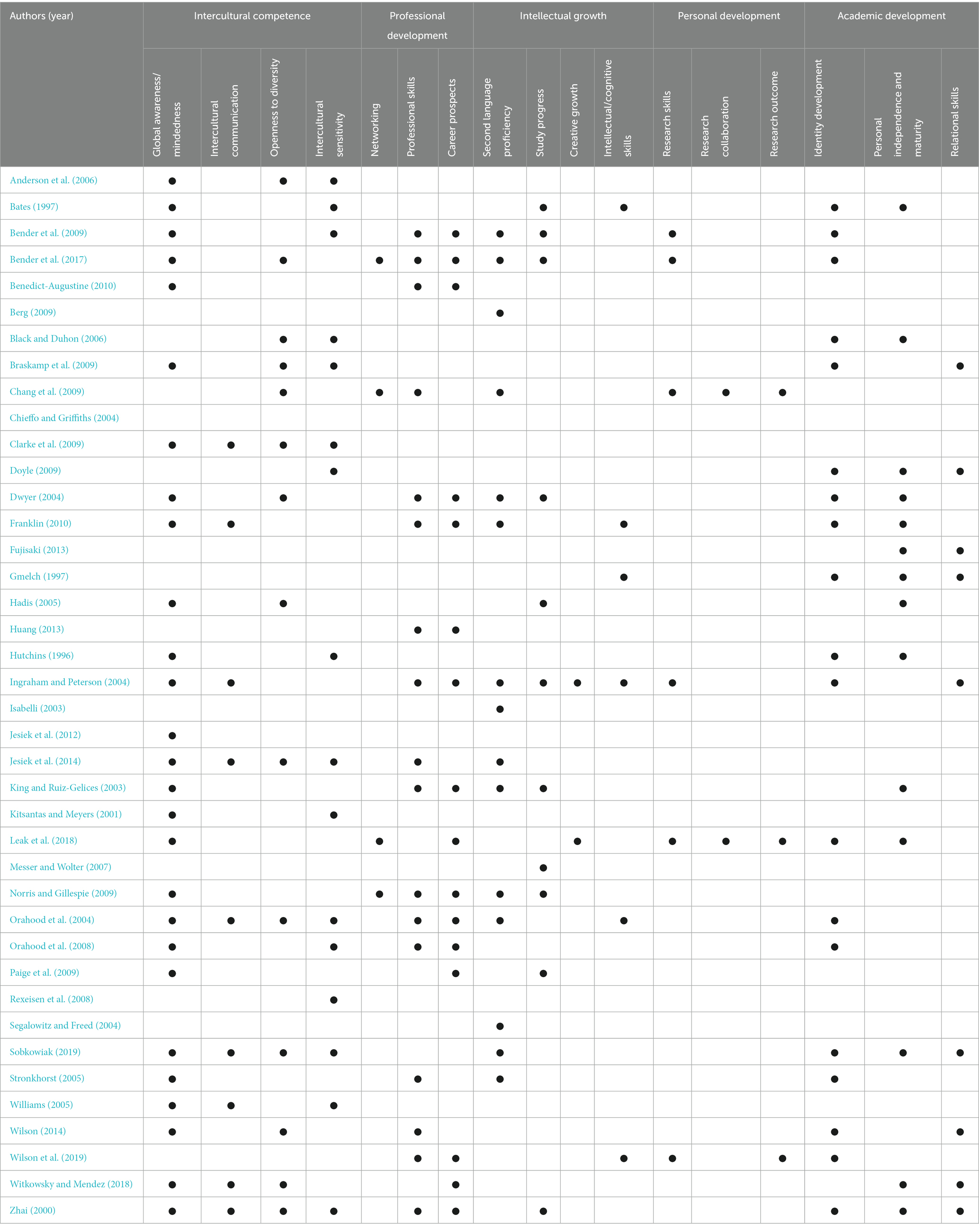
Table 4. Overview of the analyzed publications and distribution of competencies and subcompetencies.
Eighty percent of the analyzed studies evaluated impacts on the students’ intercultural competencies, followed by intellectual growth and personal development (60% each) and professional development (50%). Only 15% of the reviewed publications addressed academic development, which can be explained by the fact, that only 18% of the reviewed studies analyzed international research experiences. Interestingly, only 30% of the reviewed studies measured possible impacts on students’ study progress and on the knowledge gained in their field of study, although 82% of the reviewed studies analyzed study abroad interventions. Distributions of the evaluated competencies and subcompetencies are shown in Figures 3, 4. It should be noted that the competencies intercultural competence and intellectual growth comprise four subcompetencies whereas the other competencies comprise three subcompetencies.
5.1.1. Intercultural competence
As facets of global awareness/mindedness researchers reported that students extended their worldviews (Hutchins, 1996; Orahood et al., 2008; Witkowsky and Mendez, 2018), became more interested in world affairs (Zhai, 2000; Hadis, 2005; Braskamp et al., 2009), increased their understanding of their own culture (King and Ruiz-Gelices, 2003; Dwyer, 2004; Ingraham and Peterson, 2004), and gained knowledge and appreciation for other countries and cultures (Chieffo and Griffiths, 2004; Dwyer, 2004; Norris and Gillespie, 2009). The impact of an international student experience on intercultural sensitivity is reflected by increased cross-cultural tolerance (Chieffo and Griffiths, 2004; Black and Duhon, 2006), respect for other cultures (Zhai, 2000; Kitsantas and Meyers, 2001; Doyle, 2009), and a better understanding of different cultures (Zhai, 2000; Braskamp et al., 2009; Doyle, 2009). The influence on openness to diversity is especially reflected in an increased diversity of friends and contacts (Dwyer, 2004; Jesiek et al., 2014) and a greater appreciation of diversity (Clarke et al., 2009; Wilson, 2014). Participants of these studies especially improved their intercultural communication competencies by gaining cross-cultural communication skills which helped them to connect and interact with people from different cultures (Orahood et al., 2004; Franklin, 2010; Jesiek et al., 2014).
5.1.2. Personal development
Students whose identity development has been affected by the international student experience especially reported increased self-confidence (Dwyer, 2004; Black and Duhon, 2006; Bender et al., 2009; Wilson, 2014), self-esteem (Hutchins, 1996), self-understanding (Bender et al., 2009), self-reflection (Wilson, 2014), and emotional growth (Orahood et al., 2008). One third of the reviewed publications also report that the students became more mature and independent during their time abroad (Gmelch, 1997; King and Ruiz-Gelices, 2003; Black and Duhon, 2006; Franklin, 2010). Additionally, gains in relational skills have been reported as development of empathy and listening skills (Wilson, 2014; Witkowsky and Mendez, 2018), as well as increased adaptability, patience, and flexibility (Gmelch, 1997; Chieffo and Griffiths, 2004).
5.1.3. Intellectual growth
As part of the students’ second language proficiencies, students improved their oral communication skills (Isabelli, 2003; Dwyer, 2004; Segalowitz and Freed, 2004; Berg, 2009), recognized the importance of learning foreign languages (Chang et al., 2009), and received more interest in learning a foreign language (Ingraham and Peterson, 2004). Impacts on students’ study progress are reflected in gains of course-related knowledge (Chieffo and Griffiths, 2004; Bender et al., 2009, 2017), increased interest in further studies (King and Ruiz-Gelices, 2003; Dwyer, 2004) and making decisions regarding course selection (Dwyer, 2004; Norris and Gillespie, 2009). The acquisition of intellectual/cognitive skills becomes apparent through improved problem-solving competencies (Gmelch, 1997; Orahood et al., 2004; Wilson et al., 2019) and increased abilities in dealing with the unexpected (Ingraham and Peterson, 2004). Creative growth was especially expressed by higher appreciation of arts (Chieffo and Griffiths, 2004; Ingraham and Peterson, 2004) and becoming more creative (Leak et al., 2018).
5.1.4. Professional development
Professional skills reported in the reviewed articles include verbal and non-verbal communication skills (Zhai, 2000; Chang et al., 2009; Wilson et al., 2019), interpersonal skills (Orahood et al., 2008; Wilson et al., 2019), leadership skills (Chang et al., 2009), self-efficiency (Jesiek et al., 2014), and presentation skills (Bender et al., 2017) which are helpful to be successful in a work environment. During their time abroad, students also became aware of other career options and therefore changed their career directions (Norris and Gillespie, 2009; Huang, 2013; Leak et al., 2018) and developed an interest in working abroad or for an internationally oriented company (Ingraham and Peterson, 2004; Orahood et al., 2004; Witkowsky and Mendez, 2018). It is also reported that students became more competitive on the job market (King and Ruiz-Gelices, 2003; Franklin, 2010) and earn higher average incomes (King and Ruiz-Gelices, 2003; Franklin, 2010), which means that employers appreciate when students participate in international student experiences. Only three of the 40 reviewed publications measured that students could expand or establish their networks while being abroad (Chang et al., 2009; Norris and Gillespie, 2009; Leak et al., 2018).
5.1.5. Academic development
Impacts on the students’ research skills were especially reported as improvements in writing, analytical, and presentation skills (Bender et al., 2017; Leak et al., 2018). Particularly, students could increase their research productivity (Leak et al., 2018; Wilson et al., 2019). They could also broaden their research perspective and gained access to new research tools (Chang et al., 2009) which partially resulted in changes in their research direction (Leak et al., 2018). Leak et al. (2018) also report a likely increase in the number of patents and publications from international students and that longstanding collaborations could have been developed.
5.1.6. Relevance of examined competencies
Scholars especially concentrated on these competencies since these are valuable skills that are attractive to potential employers and therefore improve the students’ competitiveness on the job market (Clarke et al., 2009; Franklin, 2010; Jesiek et al., 2014). Spending time in a foreign country and within an unfamiliar cultural context is accompanied by daily challenges which teach students to act, adapt, and work in cross-cultural settings (Gmelch, 1997). Even simply participating in such an intervention demonstrates the student’s open-mindedness and initiative. However, these competencies will only be business success factors if the students are able to effectively articulate the achievements of their international student experience during their application process or while networking. Therefore, students need to reflect on their experiences to become better prepared and more proficient for their professional career (Orahood et al., 2004).
If students are pursuing academic careers, international research collaborations are particularly valuable. Additionally, talking to researchers with different cultural backgrounds enhances the students’ ability to articulate and discuss their own research competently and effectively. Therefore, to reap maximum benefit, students need to be taught about characteristics of successful collaborations and how to implement them (Leak et al., 2018).
5.2. Design method
The design analysis included data collection, analysis, and validation, as well as characteristics such as investigated international interventions and number of participants.
5.2.1. Competencies
Most research efforts to date failed to measure the impact of the international intervention on student competencies. Thus, the reviewed publications only tackled on average 2.6 competencies. In fact, one third of the studies included just one competency, 13% measure two, and only 10% included all five competencies (see Figure 5).
Analysis of the 17 subcompetencies revealed that, on average, only 4.9 different subcompetencies were analyzed by researchers. Most frequently, four (18%), one and six (both 15%) subcompetencies were addressed whereas 74% reported impacts on less than six of the 17 subcompetencies (see Figure 6).
To analyze non-trivial connections between the reviewed publications a network visualization has been created which displays connections in combination with the average publication years so that changes in the body of literature become visible (see Figure 7). Displayed terms are keywords at least four of the reviewed publications have in common when comparing titles and abstracts. Colors give an indication of the average publication year. Co-occurrences between terms are reflected by links between them. Terms are closer located to each other when they occur together in more publications.
The network visualization reveals that the focus of the researchers changed over the years. Impacts on the students’ personal development were prevalent in older publications, whereas professional development and especially impacts on the students’ careers were more present in younger publications. Since impacts on students’ personal development have already been researched in previous studies, researchers shifted their focus on the changing requirements for employees as a result of the increasing importance of soft skills like communication skills (Williams, 2005; Clarke et al., 2009). Expectedly, intercultural competence remained important during the observed period due to the ongoing globalization and the demand of interculturally competent employees (Orahood et al., 2008; Norris and Gillespie, 2009).
5.2.2. Data collection tools and methods
In almost half of the studies (48%) only one data collection tool was used to assess the students’ international experience and in all but two, the data was collected with the help of surveys alone. Two distinct data collection approaches were used by 28 and 20% used three (see Figure 8). Such lack of heterogeneity in the data collection approach prevents a holistic analysis of possible impacts of an intervention, therefore a broad study focus is expedient.
Within the 40 reviewed studies, 12 different data collection tools were used (see Figure 9). A majority (78%) of the research teams used surveys, while 45% leveraged interviews. Fifteen percent analyzed student journals and 10% collected data through focus group sessions. To collect data about impacts on language proficiencies, language tests were conducted.
5.2.3. Data collection characteristics
Even though a mixed-method design is better suited to capture personal experiences, only 40% used such an approach. Almost as many studies (35%) used only quantitative data and 25% used only qualitative data. Based on that, the majority of the reviewed studies chose research designs that are not suitable for capturing the whole intervention. Therefore, it is crucial for future studies to choose an appropriate research design that is able to capture all relevant facets of the intervention.
Data should be collected at different times during a study in order to generate a baseline and to assess the influence of time on the intervention. However, only 5% of the reviewed studies collected their data pre, post, and post-post. Thirty-eight percent of the studies collected data only once during their study, in particular, post-post intervention (30%). Thereby the time between the intervention and the data collection varies between 1 year and up to 52 years. Collecting data so long after the intervention may cause problems with a study’s internal validity due to maturation so that the findings should be used with caution. Moreover, only four of these studies used a control group to validate their findings, resulting in validity and applicability issues. Thirty percent of the studies collected data before and after the international student experience, and 23% before, during, and after the international experience, so that no sustained impacts were measured (Figure 10).
In order to improve objectivity and to prevent biased results, data should be collected from other sources besides self-evaluation of the students. However, only 15% collected data also from the students’ advisors in addition to students’ self-evaluations. Four of them collected data from the students’ host and home advisor and two only from the host advisors. Only one of these studies also collected data from experts on their study abroad experiences (see Figure 11). Therefore, most of the studies lack objectivity and contrasted results. This issue is associated with the timing of data collection. Since 30% of the studies collected data post-post intervention and up to 52 years after the international experience, the inquiry of peers is almost impossible.
5.2.4. Study validation
Forty-five percent of the sample publications failed to address validity and reliability. To investigate the validation of the reviewed studies, the methodology sections were analyzed. Unfortunately, not all methodology sections provide sufficient information about the research design, preventing an expedient assessment. Fifty-five percent of the reviewed studies used reliable data collection methods that have been validated. The remaining studies do not indicate if their methods are valid and reliable.
Even though control data is crucial for a study’s validity, only 65% of the publications collected control data in order to establish a comparison standard against which the impact of the intervention can be measure. Thereby, 8% made use of a control group, 30% collected data pre intervention, and 27% did both.
6. Discussion
An appropriate research design is crucial to capture the breadth and depth of an international student experience. However, many studies fail to properly design their research and therefore lack objectivity and contrasted results resulting in limitations of the findings due to validity and reliability issues. In order to design an international research experience that effectively captures all facets of an international intervention, the design must be able to measure the competencies that are potentially impacted by the international experience, including intercultural competence, personal development, intellectual growth, professional development, and academic development. By combining different and multiple methods, sources, analysts, and theories, and therefore by applying the concept of triangulation, a research study with low bias and strong implications results. Besides that, validity and reliability of a research study need to be addressed, so that the methods measure what they are supposed to measure and that findings can be generalized. To capture intermediate as well as longitudinal effects, data needs to be collected at different time points, including pre, post, and post-post.
Based on these principles, a research design has been developed that is capable of capturing the complexity of an international research experience. Following the concept of triangulation, a mixed methods approach is applied to capture quantitative as well as qualitative aspects of an international experience. Quantitative data are collected through surveys. Thereby, two different surveys are used to capture all facets of an international intervention. The Intercultural Development Inventory (IDI), a valid and reliable tool that has already been psychometrically tested (Berg, 2009), was chosen to measure the impact on the students’ intercultural development. To measure other aspects of an international experience, including impacts on the students’ academic, personal, and professional development, as well as intellectual growth, the Student Progress Survey has been developed.
The surveys are administered several times over a 2.5-year period. Data is collected before the international intervention (pre) to generate control data. In order to measure immediate impacts on the students, data is collected right after the students return to their home universities (post). Additionally, to analyze if the impacts sustain, the surveys are also distributed 1 year, as well as 2 years after the intervention (post-post). Since these data collection efforts only rely on the students’ self-assessment, a third survey has been developed that collects data on the students’ performance and development from their advisors. For a more complete understanding of the impacts of an international experience and to gain valuable background information, qualitative data are collected during interviews in addition to the quantitative survey data.
It is further of paramount importance to not only report and analyze the improved study’s findings but also utilize them to improve future students’ experiences. International student experiences offer the opportunity to develop valuable competencies that have a positive impact on the students’ development and career, and hence increase the economic value pulled from the intervention. Students can gain valuable competencies while participating in an international experience. Today’s employers are not only interested in the students’ technical skills, but also in their soft skills. Particularly in our globalized world economy, cross cultural work settings and the ability to adroitly navigate them characterizes a valuable employee, especially when paired with adaptability, flexibility, and communication skills, among others.
Nevertheless, almost all current studies on international experiences do not account for the fact that students may require (guided) reflection on their newly acquired competencies, in order to deploy them successfully, or guidance on how to create and foster international networks and collaborations. Meaning many experiences today cannot achieve their full potential because this effect has not been studied. In doing so, also shorter international experiences could have a significant positive effect on the students’ development, if planned and executed carefully.
Based on that, a length of one semester has been chosen for the international experience in combination with preparation and reflection activities. Before students travel abroad, students have to engage in an onboarding session, as well as cultural awareness and leadership courses in order to best prepare them for their experience and to maximize the impact of the intervention. After the students return to their home university, students participate in reflective interviews and are encouraged to sustain and deepen their relationships with the host research team by publishing their results in collaboration with their hosts.
7. Conclusions and future research
Several research studies have been conducted in order to measure the impact of international student experiences on students’ development and growth, categorized in five main competencies: intercultural competence, personal development, professional development, intellectual growth, and academic development. However, most of the reviewed studies failed to properly design their research study, resulting in issues with reliability and validity and therefore in the credibility of the findings. By applying the concept of triangulation, as discussed in detail, the proposed research study intents to vastly overhaul the current state of available literature, allowing for the first time to generalize and widely apply findings with minimal bias regarding the students’ development.
Based on these findings, educators can re-design and better plan future international experiences to allow for the greatest benefits possible in a given time abroad. Having empirical data can help in better decision-making. This encompasses pre- and post-engagements with the students in order to raise their own awareness as to how much personal benefits they reaped and what and how they can put them forth beneficially in their future. Besides individual benefits for participants, an optimized international experience will simultaneously increase the economic value as the workforce productivity rises.
This study revealed that most of the reviewed publications focus on study abroad experiences. Little is known about the impacts of international research experiences. While participating in such an intervention, students are granted access to not only world-class facilities, but also unique sources of data, and ideas. However, impacts of research experiences on a students’ research or dissertation have not yet been analyzed comprehensively. Furthermore, since current publications mainly focus on international experiences for undergraduate students, additional research about graduate experiences is necessary in order to develop interventions that cover the needs of graduate students.
As a limitation of this study, it needs to be acknowledged, that only studies published in English as peer-reviewed journal articles or dissertations were selected for this research. Therefore, potential studies that could provide valuable insights were omitted, since they were published in other outlets or languages other than English. Additionally, since the majority of the reviewed studies analyzed interventions conducted by universities and colleges in the United States, the generalizability of the findings is limited.
Data availability statement
The original contributions presented in the study are included in the article/supplementary material, further inquiries can be directed to the corresponding author.
Author contributions
VS, DG, and SA: conceptualization. VS: writing – original draft preparation and visualization. DG and SA: writing – review and editing, supervision, project administration, and funding acquisition. All authors contributed to the article and approved the submitted version.
Funding
This material is based upon work supported by the National Science Foundation under grant no. 1855799.
Conflict of interest
The authors declare that the research was conducted in the absence of any commercial or financial relationships that could be construed as a potential conflict of interest.
Publisher’s note
All claims expressed in this article are solely those of the authors and do not necessarily represent those of their affiliated organizations, or those of the publisher, the editors and the reviewers. Any product that may be evaluated in this article, or claim that may be made by its manufacturer, is not guaranteed or endorsed by the publisher.
References
Åkerlind, G. S. (2005). Academic growth and development – how do university academics experience it? High. Educ. 50, 1–32. doi: 10.1007/s10734-004-6345-1
Åkerlind, G. S. (2008). An academic perspective on research and being a researcher: an integration of the literature. Stud. High. Educ. 33, 17–31. doi: 10.1080/03075070701794775
Anderson, P. H., Lawton, L., Rexeisen, R. J., and Hubbard, A. C. (2006). Short-term study abroad and intercultural sensitivity: a pilot study. Int. J. Intercult. Relat. 30, 457–469. doi: 10.1016/j.ijintrel.2005.10.004
Bates, J. T. (1997). The Effects of Study Abroad on Undergraduates in an Honors International Program (Doctoral Dissertation, University of South Carolina). ProQuest Dissertations & Theses Global.
Bender, C., Wright, D., and Lopatto, D. (2009). Students’ self-reported changes in intercultural knowledge and competence associated with three undergraduate science experiences. Front. Interdisc. J. Study Abroad 18, 301–322. doi: 10.36366/frontiers.v18i1.268
Bender, C., Yaffee, K., and Lopatto, D. (2017). Undergraduate research abroad: different program designs serve different needs. Counc. Undergrad. Res. Q. 37, 31–39. doi: 10.18833/curq/37/3/1
Benedict-Augustine, A. L. (2010). The Impact of International Internships on Undergraduate College Students’ Career Development (Doctoral Dissertation, University of Pennsylvania). ProQuest Dissertations & Theses Global.
Berg, M. V. (2009). Intervening in student learning abroad: a research-based inquiry. Intercult. Educ. 20, S15–S27. doi: 10.1080/14675980903370821
Bhawuk, D. P., and Brislin, R. (1992). The measurement of intercultural sensitivity using the concepts of individualism and collectivism. Int. J. Intercult. Relat. 16, 413–436. doi: 10.1016/0147-1767(92)90031-o
Black, H. T., and Duhon, D. L. (2006). Assessing the impact of business study abroad programs on cultural awareness and personal development. J. Educ. Bus. 81, 140–144. doi: 10.3200/joeb.81.3.140-144
Braskamp, L. A., Braskamp, D. C., and Merrill, K. C. (2009). Assessing progress in global learning and development of students with education abroad experiences. Front. Interdisc. J. Study Abroad 18, 101–118. doi: 10.36366/frontiers.v18i1.256
British Council. (2012). The Shape of Things Come: Higher Education Global Trends and Emerging Opportunities to 2020. Available at: https://www.britishcouncil.org/sites/default/files/the_shape_of_things_to_come_-_higher_education_global_trends_and_emerging_opportunities_to_2020.pdf (Accessed December 15, 2022).
Chang, Y., Atkinson, D., and Hirleman, E. D. (2009). International research and engineering education: impacts and best practices. Online J. Global Eng. Educ. 4:1.
Chickering, A. W., and Reisser, L. (1993). Education and Identity (2nd). San Francisco: Jossey-Bass Publishers.
Chieffo, L., and Griffiths, L. (2004). Large-scale assessment of student attitudes after a short-term study abroad program. Front. Interdisc. J. Study Abroad 10, 165–177. doi: 10.36366/frontiers.v10i1.140
Clarke, I., Flaherty, T. B., Wright, N. D., and McMillen, R. M. (2009). Student intercultural proficiency from study abroad programs. J. Mark. Educ. 31, 173–181. doi: 10.1177/0273475309335583
Creswell, J. W., and Creswell, J. D. (2018). Research Design: Qualitative, Quantitative, and Mixed Methods Approach (5th). Thousand Oaks, California: SAGE Publications.
Deardorff, D. K. (2006). Identification and assessment of intercultural competence as a student outcome of internationalization. J. Stud. Int. Educ. 10, 241–266. doi: 10.1177/1028315306287002
Doyle, D. (2009). Holistic assessment and the study abroad experience. Front. Interdisc. J. Study Abroad 18, 143–156. doi: 10.36366/frontiers.v18i1.258
Ducheny, K., Alletzhauser, H. L., Crandell, D., and Schneider, T. R. (1997). Graduate student professional development. Prof. Psychol. Res. Pract. 28, 87–91. doi: 10.1037/0735-7028.28.1.87
Dwyer, M. M. (2004). More is better: the impact of study abroad program duration. Front. Interdisc. J. Study Abroad 10, 151–164. doi: 10.36366/frontiers.v10i1.139
Fitzgerald, J., Ojanperä, S., and O’Clery, N. (2021). Is academia becoming more localised? The growth of regional knowledge networks within international research collaboration. Appl. Network Sci. 6, 1–27. doi: 10.1007/s41109-021-00371-w
Franklin, K. (2010). Long-term career impact and professional applicability of the study abroad experience. Front. Interdisc. J. Study Abroad 19, 169–191. doi: 10.36366/frontiers.v19i1.279
Fujisaki, S. (2013). A Look Into International Graduate Students’ Experience in the United States: A Grounded Theory Model (Doctoral Dissertation, Gannon University). ProQuest Dissertations & Theses Global.
Gibson, C., Hardy, J. H., and Buckley, M. R. (2014). Understanding the role of networking in organizations. Career Dev. Int. 19, 146–161. doi: 10.1108/cdi-09-2013-0111
Gmelch, G. (1997). Crossing cultures: student travel and personal development. Int. J. Intercult. Relat. 21, 475–490. doi: 10.1016/s0147-1767(97)00021-7
Goldsworthy, S., Baron, S., Muir, N., Button, D., Goodhand, K., and Fasken, L. (2022). International research collaborations: lessons learned and practical tips. Nurse Educ. Today 119:105591. doi: 10.1016/j.nedt.2022.105591
Grant, M. J., and Booth, A. (2009). A typology of reviews: an analysis of 14 review types and associated methodologies. Health Inf. Libr. J. 26, 91–108. doi: 10.1111/j.1471-1842.2009.00848.x
Hadis, B. F. (2005). Why are they better students when they come back? Determinants of academic focusing gains in the study abroad experience. Front. Interdisc. J. Study Abroad 11, 57–30. doi: 10.36366/frontiers.v11i1.151
Hett, E. J. (1993). Development of an Instrument to Measure Global-Mindedness (Doctoral Dissertation, University of San Diego). ProQuest Dissertations & Theses Global.
Hu, S., and Kuh, G. D. (2003). Diversity experiences and college student learning and personal development. J. Coll. Stud. Dev. 44, 320–334. doi: 10.1353/csd.2003.0026
Huang, R. (2013). International experience and graduate employability: perceptions of Chinese international students in the UK. J Hosp Leis Sport Tour Educ 13, 87–96. doi: 10.1016/j.jhlste.2013.07.001
Hunter, A., Laursen, S., and Seymour, E. (2007). Becoming a scientist: the role of undergraduate research in students’ cognitive, personal, and professional development. Sci. Educ. 91, 36–74. doi: 10.1002/sce.20173
Hunter, B., White, G. P., and Godbey, G. C. (2006). What does it mean to be globally competent? J. Stud. Int. Educ. 10, 267–285. doi: 10.1177/1028315306286930
Hutchins, M. M. (1996). International Education Study Tours Abroad Students' Professional Growth and Personal Development in Relation to International Global and Intercultural Perspectives (Doctoral Dissertation, Ohio State University). ProQuest Dissertations & Theses Global.
Ingraham, E. C., and Peterson, D. L. (2004). Assessing the impact of study abroad on student learning at Michigan State University. Front. Interdisc. J. Study Abroad 10, 83–100. doi: 10.36366/frontiers.v10i1.134
Isabelli, C. L. (2003). Development of oral communication skills abroad. Front. Interdisc. J. Study Abroad 9, 149–173. doi: 10.36366/frontiers.v9i1.119
Jesiek, B. K., Haller, Y., and Thompson, J. (2014). Developing globally competent engineering researchers: outcomes-based instructional and assessment strategies from the IREE 2010 China research abroad program. Adv. Eng. Educ. 4, 1–31.
Jesiek, B. K., Shen, Y., and Haller, Y. (2012). Cross-cultural competence: a comparative assessment of engineering students. Int. J. Eng. Educ. 28, 144–155.
King, R., and Ruiz-Gelices, E. (2003). International student migration and the European `year abroad´: effects on European identity and subsequent migration behavior. Int. J. Popul. Geogr. 9, 229–252. doi: 10.1002/ijpg.280
Kirk, E. (2008). Developing Evaluation Approaches to International Collaborative Science and Engineering Activities. Research Triangle Park, NC: Sigma Xi, The Scientific Research Society.
Kitsantas, A., and Meyers, J. (2001). Studying abroad: does it enhance college student cross-cultural awareness? Int. Rev. Educ. 21, 207–215.
Koester, J. (1985). A Profile of the U. S. Student Abroad. Council on International Educational Exchange. Sacramento, California.
Kuh, G. D. (1995). The other curriculum: out-of-class experiences associated with student learning and personal development. J. High. Educ. 66, 123–155. doi: 10.2307/2943909
Kumar, R. (2014). Research Methodology – A Step-by-Step Guide for Beginners (4th). Los Angeles: SAGE Publications.
Leak, A. E., Sciaky, E., Lenaburg, L., Bianchini, J. A., and Scott, S. (2018). Essential elements of collaboration: understanding how chemistry graduate students experience collaboration through international research visits. J. Chem. Educ. 95, 749–757. doi: 10.1021/acs.jchemed.7b00781
Lee, S., and Bozeman, B. (2005). The impact of research collaboration on scientific productivity. Soc. Stud. Sci. 35, 673–702. doi: 10.1177/0306312705052359
Liu, J., Guo, X., Xu, S., and Zhang, Y. (2023). Quantifying the impact of strong ties in international scientific research collaboration. PLoS One 18, –e0280521. doi: 10.1371/journal.pone.0280521
Lynn, L., and Salzman, H. (2006). Collaborative advantage: globalization of innovation and engineering. Issues Sci. Technol. 22, 74–83.
McKeown, J. S. (2006). The Impact of Study Abroad on College Student Intellectual Development (Doctoral Dissertation, Syracuse University). ProQuest Dissertations & Theses Global.
Messer, D., and Wolter, S. C. (2007). Are student exchange programs worth it? High. Educ. 54, 647–663. doi: 10.1007/s10734-006-9016-6
Meyers, K. L., and McCready, M. J. (2020). The benefits of short-term study abroad programs for engineering students. Int. J. Eng. Educ. 36, 1312–1320.
Morgan, D. L. (2014). Integrating Qualitative and Quantitative Methods: A Pragmatic Approach, London, England: SAGE Publications.
Norris, E. M., and Gillespie, J. (2009). How study abroad shapes global careers – evidence from the United States. J. Stud. Int. Educ. 13, 382–397. doi: 10.1177/1028315308319740
Oda, S., Yamazaki, A. K., and Inoue, M. (2020). “Short-term study abroad: enhancing engineering students’ motivation for global experience” in 2020 IFEES World Engineering Education Forum-Global Engineering Deans Council IEEE, 1–5.
Olson, C. L., and Kroeger, K. R. (2001). Global competency and intercultural sensitivity. J. Stud. Int. Educ. 5, 116–137. doi: 10.1177/102831530152003
Orahood, T., Kruze, L., and Pearson, D. P. (2004). The impact of study abroad on business students' career goals. Front. Interdisc. J. Study Abroad 10, 117–130. doi: 10.36366/frontiers.v10i1.137
Orahood, T., Woolf, J., and Kruze, L. (2008). Study abroad and career paths of business students. Front. Interdisc. J. Study Abroad 17, 133–141. doi: 10.36366/frontiers.v17i1.248
Paige, R. M., Fry, G. W., Stallman, E. M., Josić, J., and Jon, J.-E. (2009). Study abroad for global engagement: the long-term impact of mobility experiences. Intercult. Educ. 20, S29–S44. doi: 10.1080/14675980903370847
Patton, M. Q. (2002). Qualitative Research and Evaluation Methods (3rd). Thousand Oaks, California: SAGE Publications.
Pike, G. R. (1995). The relationship between self-reports of college experiences and achievement test scores. Res. High. Educ. 36, 1–21. doi: 10.1007/BF02207764
Rexeisen, R. J., Anderson, P. H., Lawton, L., and Hubbard, A. C. (2008). Study abroad and intercultural development: a longitudinal study. Front. Interdisc. J. Study Abroad 17, 1–20. doi: 10.36366/frontiers.v17i1.241
Richardson, J. W., Carr, M., and Watts, J. L. (2020). A case study of educational leadership doctoral students: developing culturally competent school leadership through study abroad. Int. J. Dr. Stud. 15, 541–558. doi: 10.28945/4642
Rohs, F. R. (1999). Response shift bias: a problem in evaluating leadership development with self-report pretest-posttest measures. J. Agric. Educ. 40, 28–37. doi: 10.5032/jae.1999.04028
Royal Society (2011). Knowledge, Networks and Nations: Global Scientific Collaboration in the 21st Century. The Royal Society. London, England.
Ruben, B. D. (1976). Assessing communication competency for intercultural adaption. Group Organ. Stud. 1, 334–354. doi: 10.1016/j.jaci.2012.05.050
Schuman, L. J., Besterfield-Sacre, M., and McGourty, J. (2005). The ABET `professional skills´- can they be taught? Can they be assessed? J. Eng. Educ. 94, 41–55. doi: 10.1002/j.2168-9830.2005.tb00828.x
Segalowitz, N., and Freed, B. F. (2004). Context, contact, and cognition in oral fluency: learning Spanish in at home and study abroad contexts. Stud. Second. Lang. Acquis. 26, 173–199. doi: 10.1017/S0272263104262027
Sobkowiak, P. (2019). The impact of studying abroad on students’ intercultural competence: an interview study. Stud. Second Lang. Learn. Teach. 9, 681–710. doi: 10.14746/ssllt.2019.9.4.6
Stronkhorst, R. (2005). Learning outcomes of international mobility at two Dutch institutions of higher education. J. Stud. Int. Educ. 9, 292–315. doi: 10.1177/1028315305280938
Sutton, R. C., Miller, A. N., and Rubin, D. L. (2007). “Research design in assessing learning outcomes of education abroad programs” in A Guide to Outcomes Assessment in Education Abroad. ed. M. C. Bolen (Carlisle, PA: Forum on Education Abroad), 23–59.
Wagner, C. S., and Leydesdorff, L. (2005). Network structure, self-organization, and the growth of international collaboration in science. Res. Policy 34, 1608–1618. doi: 10.1016/j.respol.2005.08.002
Waldbaum, R. (1996). A Case Study of Institutional and Student Outcomes of an Educational Exchange Program: The University of Denver and the University of Bologna (Doctoral Dissertation, University of Denver). ProQuest Dissertations & Theses Global.
Walther, J., Kellam, N., Sochacka, N., and Radcliffe, D. (2011). Engineering competence? An interpretive investigation of engineering students’ professional formation. J. Eng. Educ. 100, 703–740. doi: 10.1002/j.2168-9830.2011.tb00033.x
Watts, R. J. (1987). Development of professional identity in black clinical psychology students. Prof. Psychol. Res. Pract. 18, 28–35. doi: 10.1037/0735-7028.18.1.28
Williams, T. R. (2005). Exploring the impact of study abroad on students’ intercultural communication skills: adaptability and sensitivity. J. Stud. Int. Educ. 9, 356–371. doi: 10.1177/1028315305277
Wilson, M. F. (2014). Life After Study Abroad: A Narrative Inquiry of Graduate Student Study Abroad Returnees (Doctoral Dissertation, Clemson University). ProQuest Dissertations & Theses Global.
Wilson, C., Hirtz, M., Levkin, P. A., Sutlief, A. L., and Holmes, A. E. (2019). Facilitating an international research experience focused on applied nanotechnology and surface chemistry for American undergraduate students collaborating with mentors at a German educational and research institution. J. Chem. Educ. 96, 2441–2449. doi: 10.1021/acs.jchemed.9b00146
Witkowsky, P., and Mendez, S. L. (2018). Influence of a short-term study abroad experience on professional competencies and career aspirations of graduate students in student affairs. J. Coll. Stud. Dev. 59, 769–775. doi: 10.1353/csd.2018.0073
Keywords: international experience, research abroad, student competence, student development, design methodology
Citation: Schneider V, Grau D and Ariaratnam ST (2023) Designing an international research experience for graduate students. Front. Educ. 8:1154786. doi: 10.3389/feduc.2023.1154786
Edited by:
Marta Moskal, University of Glasgow, United KingdomReviewed by:
Marcia Håkansson Lindqvist, Mid Sweden University, SwedenWarren Kidd, University of East London, United Kingdom
Copyright © 2023 Schneider, Grau and Ariaratnam. This is an open-access article distributed under the terms of the Creative Commons Attribution License (CC BY). The use, distribution or reproduction in other forums is permitted, provided the original author(s) and the copyright owner(s) are credited and that the original publication in this journal is cited, in accordance with accepted academic practice. No use, distribution or reproduction is permitted which does not comply with these terms.
*Correspondence: Samuel T. Ariaratnam, YXJpYXJhdG5hbUBhc3UuZWR1
 Verena Schneider
Verena Schneider David Grau
David Grau Samuel T. Ariaratnam
Samuel T. Ariaratnam
